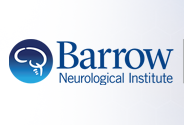Factors predicting recurrence after resection of clival chordoma using variable surgical approaches and radiation modalities
Document Type
Article
Abstract
BACKGROUND: Clival chordomas frequently recur because of their location and invasiveness. OBJECTIVE: To investigate clinical, operative, and anatomic factors associated with clival chordoma recurrence. METHODS: Retrospective review of clival chordomas treated at our center from 1993 to 2013. RESULTS: Fifty patients (56% male) with median age of 59 years (range, 8-76) were newly diagnosed with clival chordoma of mean diameter 3.3 cm (range, 1.5-6.7). Symptoms included headaches (38%), diplopia (36%), and dysphagia (14%). Procedures included transsphenoidal (n=34), transoral (n=4), craniotomy (n=5), and staged approaches (n=7). Gross total resection (GTR) rate was 52%, with 83% mean volumetric reduction, values that improved over time. While the lower third of the clivus was the least likely superoinferior zone to contain tumor (upper third=72%/middle third=82%/lower third=42%), it most frequently contained residual tumor (upper third=33%/middle third=38%/lower third=63%; P<.05). Symptom improvement rates were 61% (diplopia) and 53% (headache). Postoperative radiation included proton beam (n=19), cyberknife (n=7), intensity-modulated radiation therapy (n=6), external beam (n=10), and none (n=4). At last follow-up of 47 patients, 23 (49%) remain disease-free or have stable residual tumor. Lower third of clivus progressed most after GTR (upper/mid/lower third=32%/41%/75%). In a multivariate Cox proportional hazards model, male gender (hazard ratio [HR]=1.2/P=.03), subtotal resection (HR=5.0/P=.02), and the preoperative presence of tumor in the middle third (HR=1.2/P=.02) and lower third (HR=1.8/P=.02) of the clivus increased further growth or regrowth, while radiation modality did not. CONCLUSION: Our findings underscore long-standing support for GTR as reducing chordoma recurrence. The lower third of the clivus frequently harbored residual or recurrent tumor, despite staged approaches providing mediolateral (transcranial+endonasal) or superoinferior (endonasal+transoral) breadth. There was no benefit of proton-based over photon-based radiation, contradicting conventional presumptions.
Medical Subject Headings
Adolescent; Adult; Aged; Child; Chordoma (mortality, pathology, therapy); Cranial Fossa, Posterior (pathology, radiation effects, surgery); Female; Humans; Kaplan-Meier Estimate; Male; Middle Aged; Neoplasm Recurrence, Local (epidemiology); Neurosurgical Procedures; Radiotherapy, Adjuvant; Retrospective Studies; Skull Base Neoplasms (mortality, pathology, therapy); Young Adult
Publication Date
2-1-2015
Publication Title
Neurosurgery
E-ISSN
1524-4040
Volume
76
Issue
2
First Page
179
Last Page
85; discussion 185
PubMed ID
25594191
Digital Object Identifier (DOI)
10.1227/NEU.0000000000000611
Recommended Citation
Jahangiri, Arman; Chin, Aaron T.; Wagner, Jeffrey R.; Kunwar, Sandeep; Ames, Christopher; Chou, Dean; Barani, Igor; Parsa, Andrew T.; McDermott, Michael W.; Benet, Arnau; El-Sayed, Ivan H.; and Aghi, Manish K., "Factors predicting recurrence after resection of clival chordoma using variable surgical approaches and radiation modalities" (2015). Neurosurgery. 2128.
https://scholar.barrowneuro.org/neurosurgery/2128


